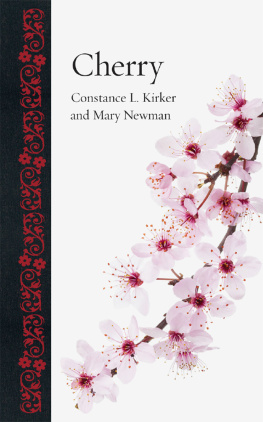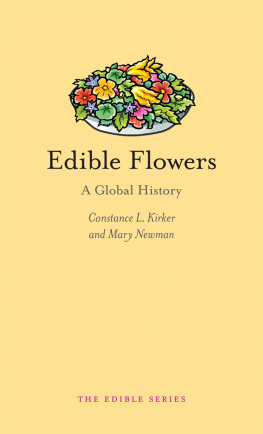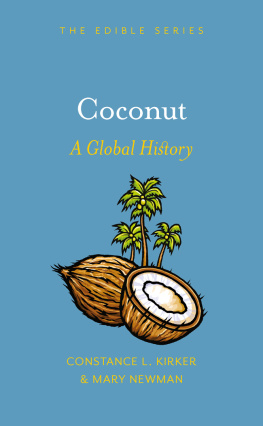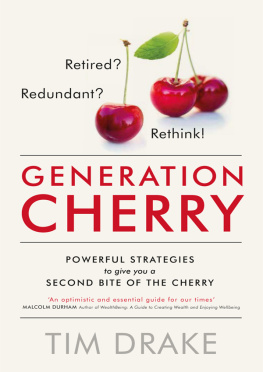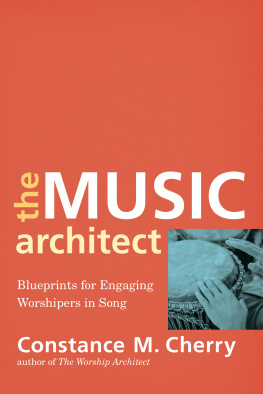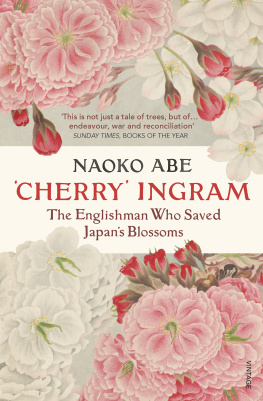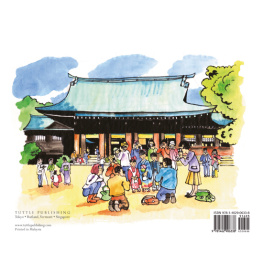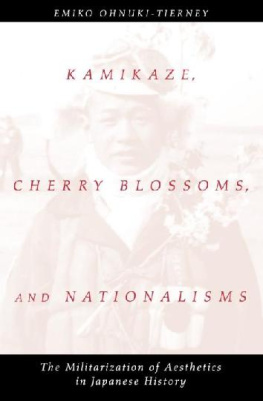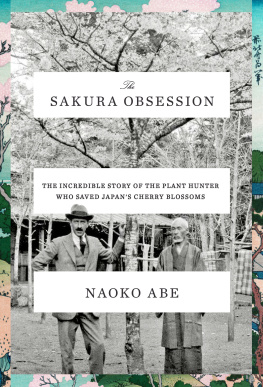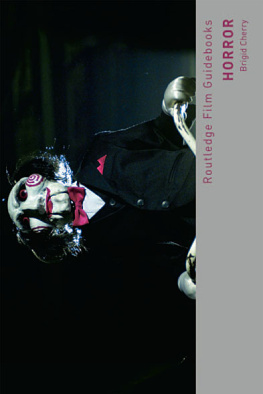CHERRY

Reaktions Botanical series is the first of its kind, integrating horticultural and botanical writing with a broader account of the cultural and social impact of trees, plants and flowers.
Published
Apple Marcia Reiss
Bamboo Susanne Lucas
Berries Victoria Dickenson
Birch Anna Lewington
Cactus Dan Torre
Cannabis Chris Duvall
Carnation Twigs Way
Carnivorous Plants Dan Torre
Cherry Constance L. Kirker and Mary Newman
Chrysanthemum Twigs Way
Geranium Kasia Boddy
Grasses Stephen A. Harris
Lily Marcia Reiss
Mulberry Peter Coles
Oak Peter Young
Palm Fred Gray
Pine Laura Mason
Poppy Andrew Lack
Primrose Elizabeth Lawson
Rhododendron Richard Milne
Rose Catherine Horwood
Snowdrop Gail Harland
Sunflowers Stephen A. Harris
Tulip Celia Fisher
Weeds Nina Edwards
Willow Alison Syme
Yew Fred Hageneder
CHERRY

Constance L. Kirker
and Mary Newman
REAKTION BOOKS
To our husbands, Tom and John, who have been with us
every step of our cherry journey
Published by
REAKTION BOOKS LTD
Unit 32, Waterside
4448 Wharf Road
London N1 7UX, UK
www.reaktionbooks.co.uk
First published 2021
Copyright Constance L. Kirker and Mary Newman 2021
All rights reserved
No part of this publication may be reproduced, stored in a retrieval system, or transmitted, in any form or by any means, electronic, mechanical, photocopying, recording or otherwise, without the prior permission of the publishers
Page references in the Photo Acknowledgements and
Index match the printed edition of this book.
Printed and bound in India by Replika Press Pvt. Ltd
A catalogue record for this book is available from the British Library
eISBN 978 1 78914 283 9
Contents


Cherry blossoms in Fukuoka, Japan.
Introduction

I want to do to you what spring does with the cherry trees
PABLO NERUDA
T he appreciation and obvious pleasure gained by simply observing the cherry fruit or its stunning blossoms is universal. Everyone likes cherries, and seemingly no one can resist the beauty of the flowering cherry tree. But what is most fascinating is the range of metaphorical meanings and almost visceral sensations conjured up by both the blossoms and the fruit of this amazing tree.
The ripe, sensuous, irresistible fruit can symbolize such divergent concepts as fertility, innocence and seductiveness. The blossoms can foretell the new beginnings of life in the spring, fertility writ large. They also represent the beautiful, fleeting and fragile quality of life, as well as the sadness of premature death, or sometimes even the Japanese concept of the perfect death.
The cherry can also represent something as fundamental as the letter c in a childs alphabet book, or even the primary colour red. The double-stemmed shape is instantly and universally recognizable, so much so that one of the first food emojis used in social media was of two cherries, symbolizing the situation of being in a relationship. Helena, in Shakespeares A Midsummer Nights Dream (1605), refers to the double cherry as a close relationship:
So we grew together,
Like to a double cherry, seeming parted,
But yet a union in partition;
Two lovely berries moulded on one stem...
The seventeenth-century painter Titian, the twentieth-century writer D. H. Lawrence and pop culture figures like humorist Erma Bombeck and graphic artist Andy Warhol are among those who have used the cherry as a symbol in a variety of creative ways. Even if one has never read Bombecks book If Life Is a Bowl of Cherries, What Am I Doing in the Pits?, the sentiment is universally understood. Cherries and their blossoms have been the subject of songs in many cultures, from the Japanese sakura songs celebrating the blossoms from as early as the eighth century CE, to the 1866 French song Le Temps des cerises (Cherry Time), and the 1966 Cherry, Cherry by singer-songwriter Neil Diamond. The message in the Palme dOr prize-winning Iranian film The Taste of Cherry (1997) is that eating cherries can be one of the small but intense pleasures in life that might even save someone from suicide. In the last scene of Herman Melvilles novel Moby-Dick, when the ship is in its final battle with the great white whale, second mate Stubb cries out for one red cherry ere we die!
Philosophers have used the image of cherries to explain complex concepts of beauty and, in some cases, reality itself. Scholars have used the fruit-laden cherry branch to explain Kants concept of pleasure, good and beauty. Kant based his analogy on Berkeleys Cherry. George Berkeley, in Three Dialogues between Hylas and Philonous (1713), argues that to be is to be perceived, using a cherry as an example:
I see this cherry, I feel it, I taste it: and I am sure nothing cannot be seen, or felt, or tasted: it is therefore real. Take away the sensations of softness, moisture, redness, tartness, and you take away the cherry, since it is not a being distinct from sensations. A cherry, I say, is nothing but a congeries of sensible impressions, or ideas perceived by various senses.
| Fruit-laden cherry branch, Fundo, Portugal. |  |
In The Interpretation of Dreams (1899), Freud used the example of a childs dream of eating cherries to characterize dreams as a form of wish fulfilment, embodying the core of Freudian theory.
So powerful is the word cherry that it creates a universally descriptive image in ones mind that helps to define terms and expressions that have little or nothing to do with the fruit or tree: cherry tomatoes, cherry-picking, cherry bomb, bowl of cherries, cherry on top. To lose ones cherry is but one of many sexual phrases from urban slang which actually have their origins in sixteenth-century poetry.
Cherry can also refer to something new or unused, or to a novice. In contemporary slang, a cherry refers to a first offender. During the Vietnam War, aviators lost their cherry after taking their first hits by enemy fire. There is even a meaning for cherry in ten-pin bowling: the striking down of only the forward pin or pins in attempting to make a spare. examines cherry imagery as an element in mythology and religion, as well as in the arts and popular culture.

Blooming cherry tree, Kodaiji temple, Kyoto, Japan.
We begin the book with the origins of the cherry tree, its distribution around the world and the ways it is cultivated. We look at how the fruit is harvested, processed, marketed and turned into various food products. Cherries and cherry bark are used as an ingredient in medicine, and cherries have even been called a superfood because of their antioxidant properties. On the other hand, there are toxins in the leaves, stems, stones (or pits) and bark that can kill people and animals.

